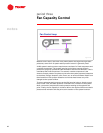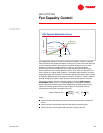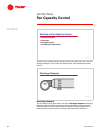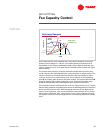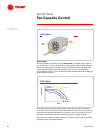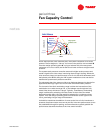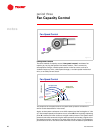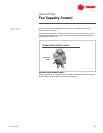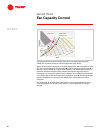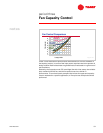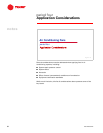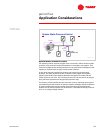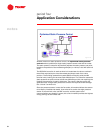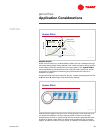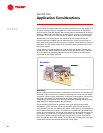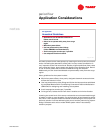
50 TRG-TRC013-EN
notes
period three
Fan Capacity Control
The performance and control of the direct-drive, variable-pitch vaneaxial
(VPVA) fan is similar to that of a fan equipped with inlet vanes.
Again, as the system resistance curve shifts upward and the fan begins to “ride
up” the current blade pitch curve toward B, from its design operating point A, it
delivers a lower airflow at a higher total pressure. The system static-pressure
controller senses this higher static pressure and sends a signal to the fan,
instructing it to change the pitch of the fan blades. This causes the performance
curve for the fan to shift downward until the balance point C falls along the VAV
system modulation curve and the fan satisfies the system static-pressure
controller.
The advantage of variable-pitch blade control is its broad modulation range—
from design airflow to virtually zero airflow—plus its potential for energy
savings.
airflow
airflow
total pressure
total pressure
bl
ade
pi
t
c
h
(
an
gl
e)
bl
ade
pi
t
c
h
(
angl
e)
surge region
surge region
design system
design system
resistance curve
resistance curve
&
$
input power
input power
%
50º
50º
40º
40º
35º
35º
30º
30º
20º
20º
15º
15º
55º
55º
45º
45º
25º
25º
VAV system
VAV system
modulation
modulation
curve
curve
Figure 74



